Elevator Car Requirements [§407.4]
The ADA Standards specify the minimum car dimensions. Alternative configurations that provide unobstructed wheelchair turning space (60” diameter circle or T-turn) with the doors closed are permitted.
Elevator Car Dimensions (§407.4.1)
Elevator Car Requirements [§407.4.2 – §407.4.5]
Other requirements for elevator cars include:
-
compliant floor surfaces
-
a maximum 1¼” horizontal clearance between car platform sill and hoistway landing
-
a self-leveling feature
-
5 ft. candles min. illumination at platform, controls, threshold, and landing sill
Car Leveling and Platform to Hoistway Clearance
Car Controls [§407.4.6 and §407.4.7]
If more than one car control panel is provided in a car, both must comply (except in existing cars where only 1 panel must comply).
Car Controls (§407.4.6 and §407.4.7)
Car Position Indicators [§407.4.8]
Position indicators are required for all cars, including those of 2-stop elevators. Specifications include:
-
½” min. character height
-
Illumination of each floor level passed or stopped at
-
Automatic verbal announcement of stop or non-verbal audible signal of passed floors and stops (if elevator not destination-oriented and has a rated speed of 200 ft./ minute max.)
-
Frequency: 300 – 3,000 Hz for verbal annunciator, 1500 Hz max. for non-verbal signal
-
Signal level: 10 dB min. above ambient to 80 dB max.
Emergency Communication [§407.4.9]
The ASME A17.1 code addresses features of required two-way emergency communication devices, including controls and visual indicators. The ADA Standards apply requirements for operable parts and tactile characters and symbols.
The ASME A17.1 code requires a two-way means of emergency communication in elevator cars. This system establishes direct communication with authorized personnel and must be activated by a push button. Handsets, which are vulnerable to vandalism, and closed compartments are prohibited. The activating button must be permanently identified by a tactile phone symbol and the term “HELP” located either on or adjacent to the button. Operating instructions are also required.
The ASME A17.1 also requires a visual signal, such as a labeled LED light or lighted jewel, to acknowledge that the emergency call has been received. The visual signal is considered a component of the two-way communication, though voice communication may also be established. The visual indication must be on the same panel as the “HELP” push button and extinguish when a communications link is terminated.
In addition to the ASME requirements, the ADA Standards require that the push button and other device controls comply as operable parts (§309). They also require the push button to be labeled with a specified tactile phone symbol and braille. Operating instructions and other information, including the label for the visible signal, must meet criteria for visual characters but are not required to be tactile.

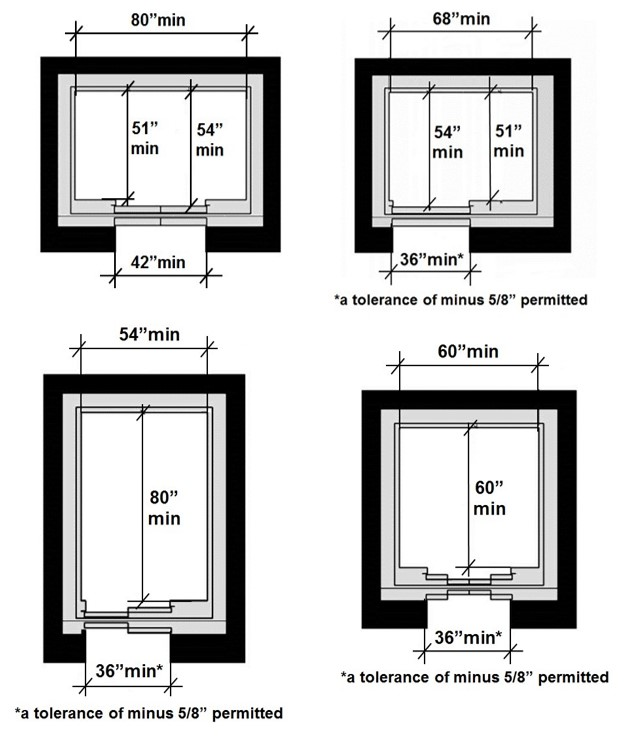
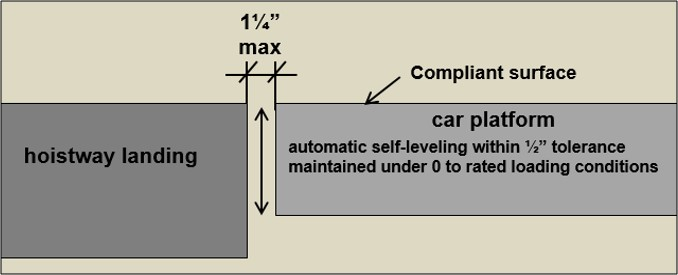
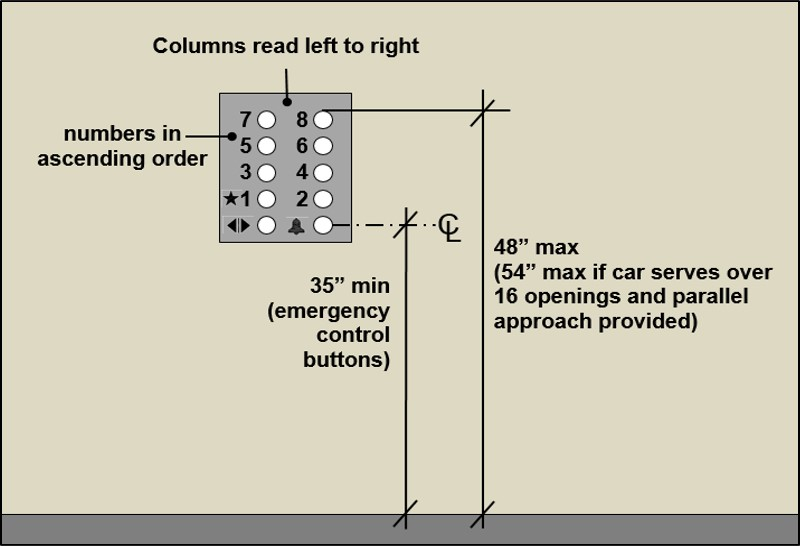
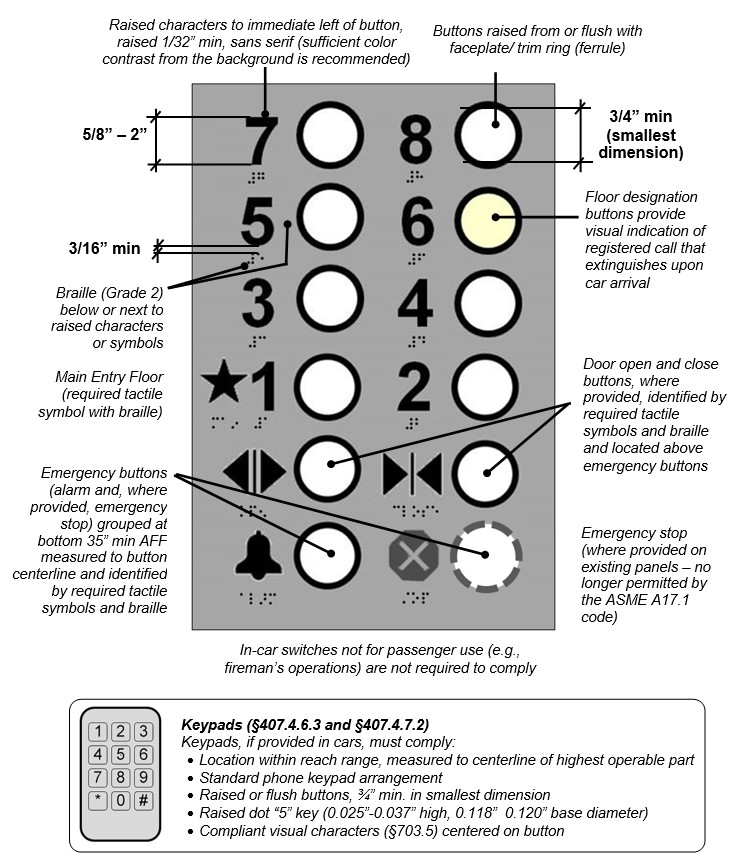
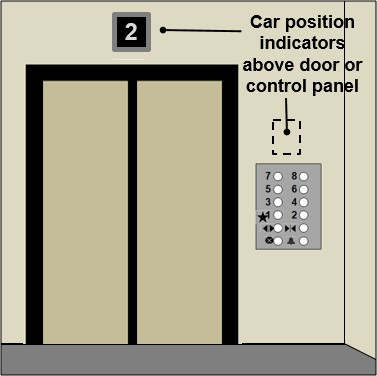
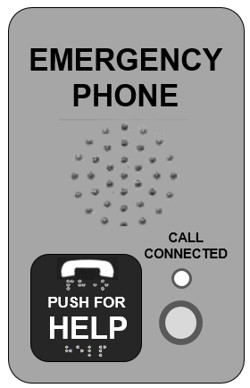
User Comments/Questions
Add Comment/Question